
At La France No. 885, a Lodge of Bon Vivants
At La France No. 885, a longstanding legacy of French Freemasonry in California is being carried into the future.
By Laura Benys
There is an English proverb that dates back to the 14th century, a time when operative masons built soaring castles one stone at a time: “Mighty oaks from little acorns grow.” Great things come from small beginnings.
The year 2019 marks the 50th anniversary of the California Masonic Foundation, the fundraising arm of California Masonry. Today, the Foundation oversees fundraising efforts for all of the fraternity’s charities – from the Masonic Homes to Raising A Reader, to name just two. Funded by the generous donations of California Masons, it is responsible for supporting a new cycle of literacy in the state, creating pathways to college for deserving but disadvantaged students, providing support for underresourced communities, and protecting every fraternal family in the jurisdiction.
But before all that, it was just an idea.
In the years that followed World War II, Americans were joiners – of clubs, community organizations, and yes, fraternities. California Masonry was booming, and so was its extended network. The fraternity purchased and maintained clubhouses near the University of California’s Los Angeles and Berkeley campuses.
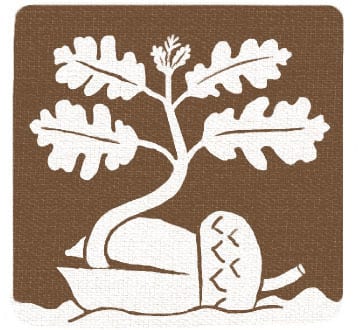
These Masonic Affiliate Clubs were social and recreational centers for university students, staff, and faculty who were relatives of Masons or themselves members of Masonic organizations. As one Grand Lodge officer explained, the fraternity’s sponsorship was “in keeping with the zeal of our members to support in every way possible the American system of public education.”
Old clubhouse brochures show photos of students cozying up to a fireplace, mingling on an outdoor patio, and dancing in pairs. They promised weekly activities and above all, “ample opportunity… to find a congenial group of acquaintances” for “the student who oftentimes is living away from home for the first time, and who finds himself in the bewildering whirl of a busy, largely impersonal University.” In an era that revolved around belonging, the clubhouses served an important purpose.
But by the 1960s, the trend toward community involvement slowed. Baby boomers were reluctant joiners, and the Masonic clubhouses grew quiet. In 1968, the fraternity determined that its money could have a greater impact elsewhere. It decided to sell the clubhouses and use the proceeds to fund a new multipurpose California Masonic Foundation, its mission “to aid and assist all mankind; the first preference thereto to be given to all phases of education.” Using the funds from the clubhouses and future donations from Masons, the fraternity would reinvent its approach to public education.
“[This foundation] will truly represent our recognition of our responsibility as Master Masons in assisting the public schools,” said 1968 Grand Master Eugene S. Hopp.
On March 5, 1969, the Foundation was incorporated. With the UCLA property yet to sell, its assets consisted entirely of the proceeds from the Berkeley sale: $337,888.
It had a long way to go.
Promising “to aid and assist all mankind” is one thing. Figuring out how to go about it is another. A special committee was appointed to come up with a plan. It included Robert Burns, president of Merritt College, and Oscar Anderson, president of the University of the Pacific in Stockton and a retired school administrator who was known to be “perhaps the most outstanding authority on school finance in California.” In a precursor to today’s Investment in Success, they recommended a scholarship program directed at students “from families of limited financial means who are capable of success in college but who, for reasons of their own and/or their family’s goals and self-image are not planning for or working toward a college education. Our purpose would be to encourage, support and motivate the students to reach their potential through our demonstrated faith in them…” In its first year, the Foundation awarded approximately 40 scholarships at $400 each.
“Our aim is to benefit all mankind… and this we endeavor to do, not only by assisting worthy students to obtain an education, but also by furnishing assistance where the need is great and the cause is worthy.”
BRO. JOHN S. HUNT, FOUNDATION BOARD PRESIDENT, 1975
It was a start, but the Foundation’s Board of Trustees made no bones about the work ahead. “A great deal remains to be done…” wrote 1969 Grand Master Chester R. MacPhee. “The challenge to our leadership is to properly direct [the Foundation] through the rough seas during these formative years. This Foundation can be an instrument of good will. This is our hope.”
A few years later, it got a break. In 1972 the Amaranth Homes of California, an arm of the Order of the Amaranth, gave the Foundation approximately $220,000 in trust as a scholarship fund for women under the age of 21. The following year, the clubhouse at UCLA finally sold, freeing the Foundation from maintenance costs and adding $550,000 to its bank account.
With the scholarship program rolling along, the Foundation sought to expand its scope. “We are not a Scholarship Committee,” insisted Foundation president John S. Hunt. “Our aim is to benefit all mankind… and this we endeavor to do, not only by assisting worthy students to obtain an education, but also by furnishing assistance where the need is great and the cause is worthy.”
Over the following years, it added grants to support all three Masonic youth orders, cleft palate and aphasia programs, the American Social Health Society, and new construction at the Masonic Homes, among others. (In 1977 it even gave a special award for “an 8 year-old child prodigy to continue her piano studies.”)
Until this point, member donations to the Foundation had been nominal; one grim year, the total was $10. But by the late ‘70s, California lodges had begun to take note of the Foundation’s work, and reach into their coffers to support it. In 1977, Josiah W. Roller Lodge No. 761 of Palo Alto held a benefit that yielded the Foundation’s first recorded donation by a lodge, in the amount of $110. Hunt wrote in his report to the fraternity, “This is one of the exciting new things about the Foundation – new sources of funds are developing as knowledge and recognition of the name ‘California Masonic Foundation’ and its charitable work filters down.”
After a decade of hard work, the Foundation had taken root.
It was a start, but the Foundation’s Board of Trustees made no bones about the work ahead. “A great deal remains to be done…” wrote 1969 Grand Master Chester R. MacPhee. “The challenge to our leadership is to properly direct [the Foundation] through the rough seas during these formative years. This Foundation can be an instrument of good will. This is our hope.”
A few years later, it got a break. In 1972 the Amaranth Homes of California, an arm of the Order of the Amaranth, gave the Foundation approximately $220,000 in trust as a scholarship fund for women under the age of 21. The following year, the clubhouse at UCLA finally sold, freeing the Foundation from maintenance costs and adding $550,000 to its bank account.
With the scholarship program rolling along, the Foundation sought to expand its scope. “We are not a Scholarship Committee,” insisted Foundation president John S. Hunt. “Our aim is to benefit all mankind… and this we endeavor to do, not only by assisting worthy students to obtain an education, but also by furnishing assistance where the need is great and the cause is worthy.”
Over the following years, it added grants to support all three Masonic youth orders, cleft palate and aphasia programs, the American Social Health Society, and new construction at the Masonic Homes, among others. (In 1977 it even gave a special award for “an 8 year-old child prodigy to continue her piano studies.”)
Until this point, member donations to the Foundation had been nominal; one grim year, the total was $10. But by the late ‘70s, California lodges had begun to take note of the Foundation’s work, and reach into their coffers to support it. In 1977, Josiah W. Roller Lodge No. 761 of Palo Alto held a benefit that yielded the Foundation’s first recorded donation by a lodge, in the amount of $110. Hunt wrote in his report to the fraternity, “This is one of the exciting new things about the Foundation – new sources of funds are developing as knowledge and recognition of the name ‘California Masonic Foundation’ and its charitable work filters down.”
After a decade of hard work, the Foundation had taken root.
“…Let us remember, ‘There is no extravagance in Charity.’ And also, ‘What we do for ourselves alone dies with us; what we do for others and the world remains and is immortal.’”
BRO. HARRY WALKER LISTER, DONOR, 1985
The first individual endowment came in 1985 from Harry Walker Lister of Buena Park Lodge No. 347. “People ask me why I started the Harry Walker Lister Masonic Scholarship Program,” Lister wrote. “One word covers it all: pride. Pride that I am a Mason and pride in the youth of our country. This gift will outlive all other gifts and multiply… Let us remember, ‘There is no extravagance in Charity.’ And also, ‘What we do for ourselves alone dies with us; what we do for others and the world remains and is immortal.’”
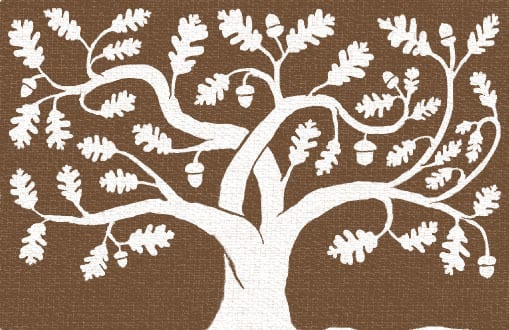
In the mid-aughts, the Foundation’s mission expanded to historic preservation and member education.
It began underwriting leadership training for lodge officers, and debuted the annual California Masonic Symposium. It supported the restoration of the endomosaic mural in the California Masonic Memorial Temple lobby.
Grand Master’s Projects introduced new initiatives each year. In response to a national nursing shortage, the Foundation created a fund for the advanced degrees and training of nursing personnel. To encourage academic research on Freemasonry, it established a Masonic curriculum at UCLA. It brought 612 veterans to the National World War II Memorial in Washington, D.C. It launched the now-beloved Masons4Mitts campaign. Although scholarships remained a meaningful focus, in the words of Past Grand Master M. William Holsinger, then board president, the Foundation was “well beyond the age of ‘the scholarship’ entity.”
Already a sponsor of the state’s Teacher of the Year program, the Foundation deepened its relationship with the California Department of Education (CDE). In 2008 it hosted an educational conference about MSAP, which led the CDE to make similar student assistance programs a permanent statewide requirement. Through 16 years of MSAP, the Foundation trained 5,000 educators, who subsequently identified and intervened to help 25,000 at-risk children. The CDE would carry the baton forward.
During these years, the Foundation stepped into the public spotlight as a facilitator for schools. Its trustees met with large urban school districts and community organizations to initiate discussions on the challenges of modern schools. “In performing this role, we have realized that we often serve as conveners, creating mutual purpose without personal gain,” said Board President John F. Lowe. “We no longer look only inward, but stronger than ever extend outward the gentle hand of Freemasonry as one solution to the myriad of issues which affect families, schools, and communities.”
In 2010, after a year of town-hall meetings and all-member surveys, the fraternity introduced its strategic plan. In envisioning the future of California Masonry, this strategic plan (and the 2020 Fraternity Plan that followed) focused the Foundation’s public school initiatives on the areas it’s known for today: early literacy and pathways to success for high school seniors.
In a historic shift away from Grand Master’s Projects, grand lodge leaders and the Foundation pledged a long-term commitment to Raising A Reader (RAR), a nationallyacclaimed early literacy and family engagement program that helps families develop lasting literacy habits that kids desperately need. Ongoing efforts began to bring RAR to the state’s lowest-performing school districts. The Foundation formed the first regional Public School Advisory Councils (there are now eight), comprised of local Masons, to establish direct communications between school districts and lodges. It also launched Investment in Success, a college scholarship program for students who exhibit the drive and character required for success, but who often have acute financial need, are the first in their family to attend college, and lack adult support. In subsequent years, it added complementary forms of support for these scholars, including partnering with college success organizations to ensure student support around financial aid, academic advising, and other needs. All of these programs are thriving today, and represent the Foundation’s long-time commitment to providing equal access to education, especially for underresourced communities.
In 2017, two changes shaped the Foundation into what it is today. It was designated as the primary fundraising agency for the fraternity, making it the single point of giving to all of the fraternity’s charitable programs, including the Masonic Homes. The same year, it launched Let’s Write the Future, the largest charitable campaign in the history of California Masonry. The campaign, which is raising funds to build memory care and advanced care facilities at the Homes, and to double RAR’s reach to 1,000 California classrooms, has been an unprecedented success so far. In the 2017-2018 Masonic year, it raised more funds than had ever been raised before in a single year at any time the 168-year history of our Grand Lodge. Members statewide were reenergized and inspired by the campaign. Their dedication was clear: They were ready to write a better future.
It’s gratifying to think of the Foundation’s first trustees, tallying up the scant donations from those early, rocky years, and what they would make of the Foundation today. Their acorn has become an oak.
When it began 50 years ago, the California Masonic Foundation awarded 40 or so $400 scholarships from a total endowment of $330,000. It struggled to raise awareness and support from the fraternity. It took years to settle into an identity. But eventually, it became a fixture in the hearts of members, lodges, and communities. It grew.
Today, it is the outward focus of the fraternity – its “charitable window to the world” – with programs that have made California Masonry synonymous with philanthropy in this state. It awards more than 100 scholarships worth between $5,000-10,000 every year. It is poised to bring early literacy support into 1,000 classrooms and the homes of students who need it most. It extends relief and support in almost every form imaginable to fraternal family, which will soon include advanced care at both Masonic Homes. It funds impactful programs such as the Masonic Youth Leadership Scholarships, created in 2016; the California Masonic Symposium, coming up on its 19th year; and Masons4Mitts, which just celebrated its 10th anniversary by surpassing $1 million raised.
And in the years ahead, as it fulfills the promise of the Let’s Write the Future campaign, the Foundation will make its greatest impact yet.
In 1968, then-Grand Master Eugene S. Hopp predicted that establishing the Foundation would be “one of the most important and far-sighted actions ever taken by this Grand Lodge.”
He was right.
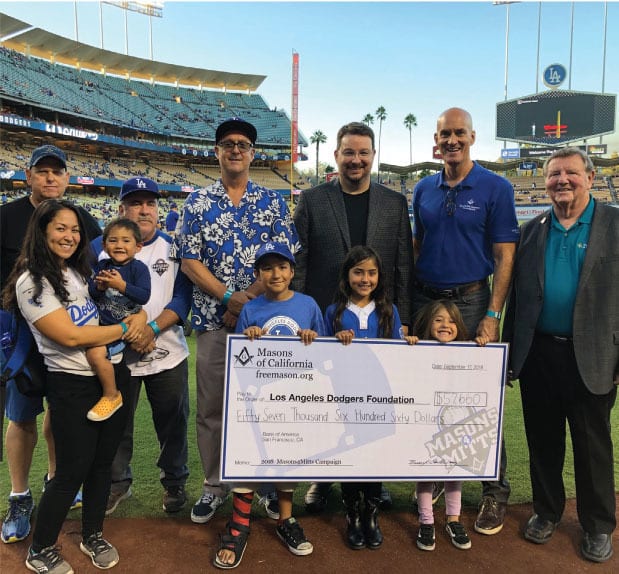
Ten years ago, the California Masonic Foundation launched Masons4Mitts in Northern California. After a record season, the now-statewide program has raised $1,011,080 in support of at-risk youth, purchasing more than 50,500 mitts for California kids.
“When we first started Masons4Mitts in Northern California in 2008, we could have only dreamed of making a million-dollar impact,” says Doug Ismail, president of the California Masonic Foundation. “This year, we surpassed that milestone! From the lodges who have been with us from the beginning to the brothers who helped us bring Masons4Mitts to Los Angeles, San Diego, and Orange County, we have truly shown the impact California Masons are capable of making for our local communities and children.”
The 2018 Masons4Mitts season raised $185,040 – a whopping $40,000 more than last year’s campaign. Congratulations to all the teams who helped make this year one for the books. Masons4Mitts will begin again this April at masons4mitts.org.

At La France No. 885, a longstanding legacy of French Freemasonry in California is being carried into the future.
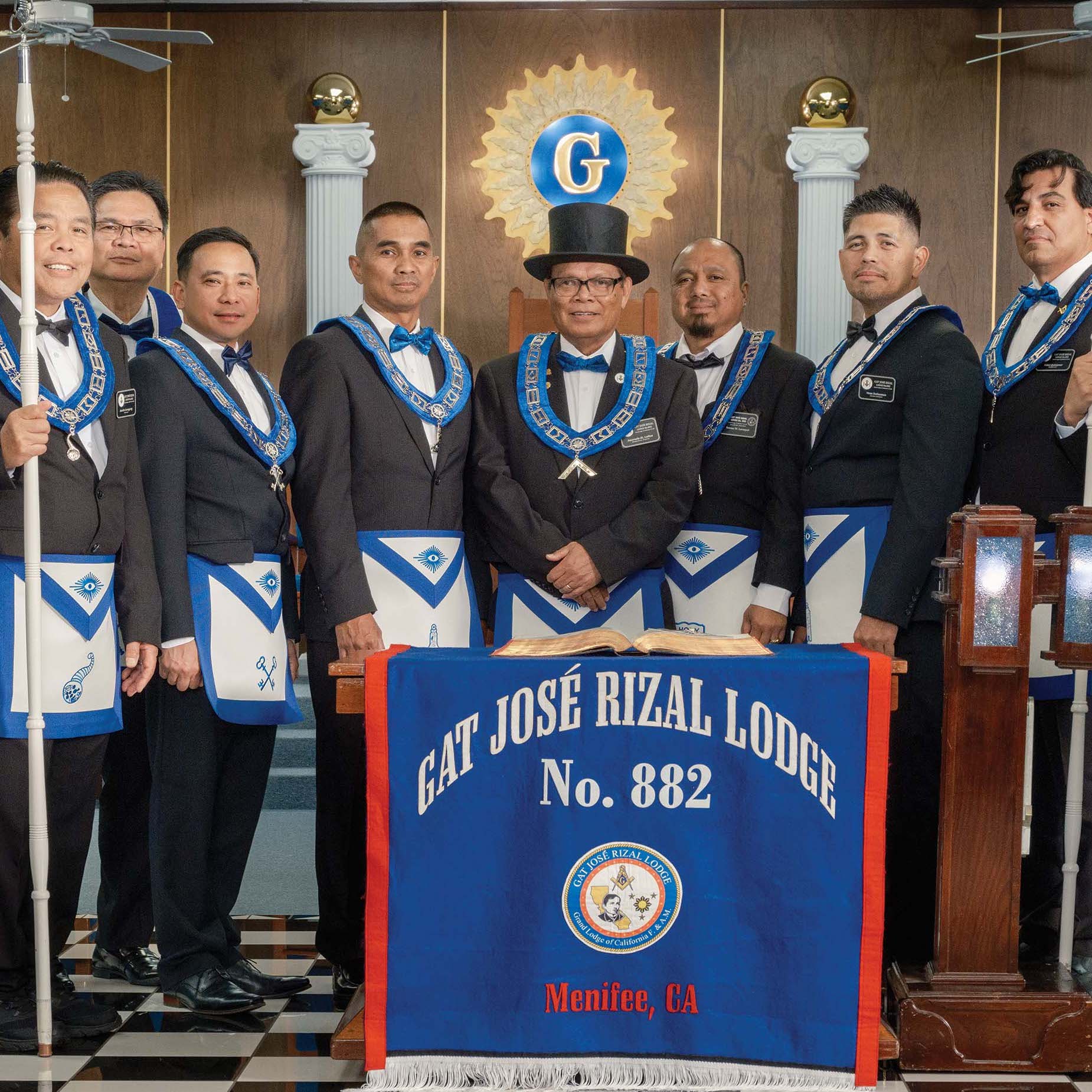
At Gat Rizal No. 882 in Menifee, California, a Masonic lodge takes its name—and inspiration—from a national hero of the Philippines.
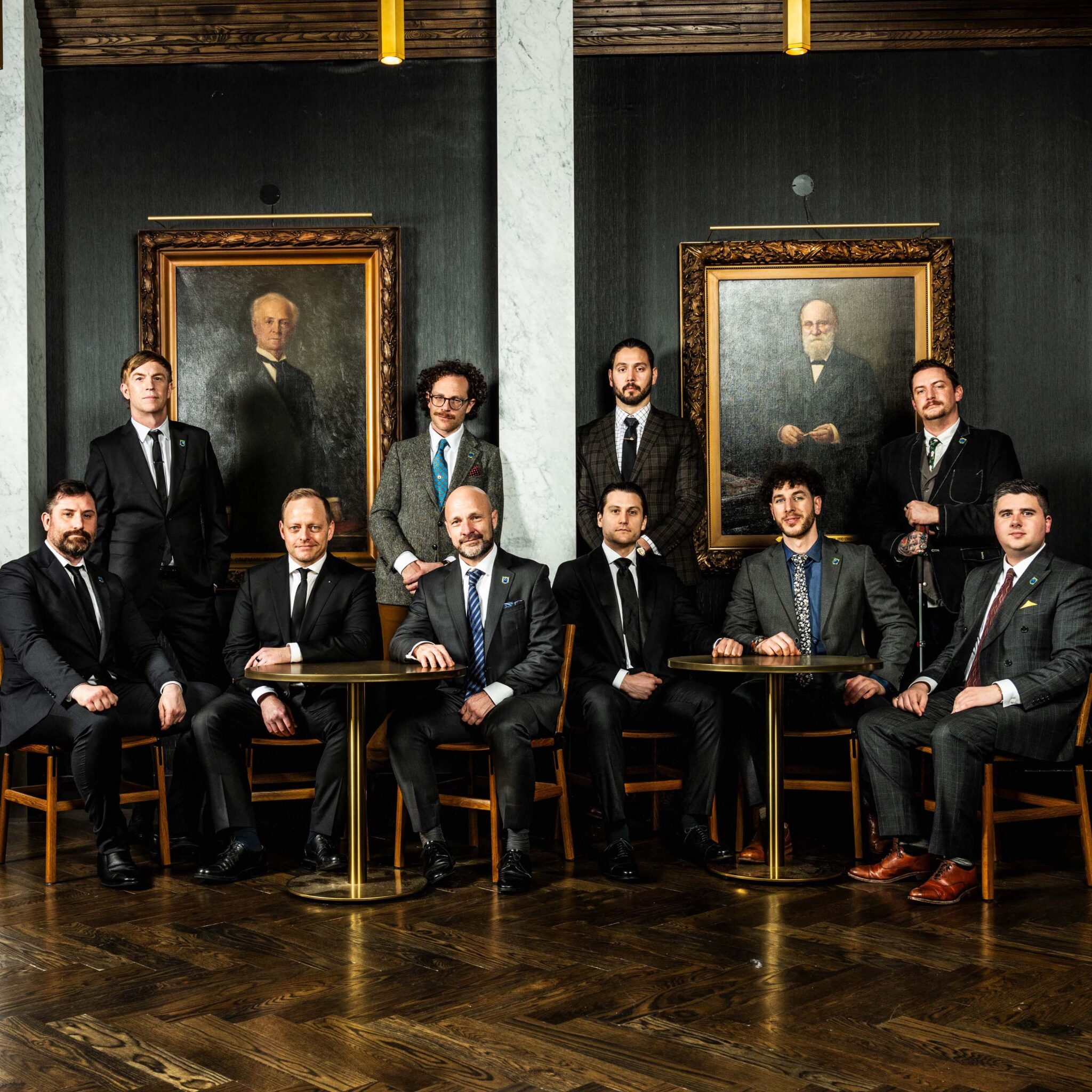
At Logos No. 861 in San Francisco, handmade, lovingly crafted material culture is part of the very fabric of the lodge.